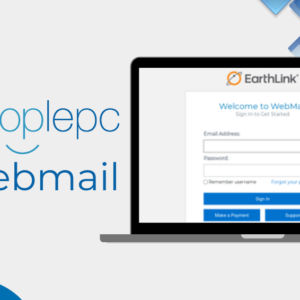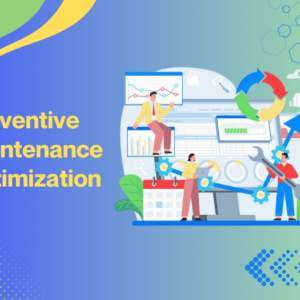Data is the fuel that runs every business today, so it must be as pure as possible to be of value. But, many factors reduce the quality of enterprise data. It takes the astute workmanship of a data cleansing company to remove those impurities and turn that data into a valuable, intelligible, and actionable asset.
This blog details what data cleaning entails, the consequences of not going about it, the various types of data errors, and the techniques that make for successful data cleansing. Read on to know why and how this process should be an essential part of your company.
What is Data Cleansing?
In a nutshell, data cleansing is the set of data management processes/functions that are applied to enterprise data to render it free from errors like duplication, incompleteness, inconsistency, and corruption. Data cleansing experts take the raw input data available from the various enterprise data sources or your company data warehouse and perform various functions to remove those errors in a series of steps.
The exact series of steps or techniques vary depending on the situation. Some data sets may require more functions than others and iterations of those steps to successfully correct them. Thus, you get to customize the data cleansing services you opt for, giving you flexibility in terms of time, cost, and other applicable factors.
Types Of Errors Found in Enterprise Data
Enterprise data is a vast entity covering multiple internal and external functions of a company. There are numerous data types, with some being common across sectors while others being specific to particular ones. The types and number of errors go in line with those data types and the industry of operation.
Below are some of the errors that are commonly found in all enterprise data:
Duplication
Enterprise data is said to suffer from duplication when there are multiple versions/copies of a data segment or entire sets present. It happens when a source resends data to your company, technical glitches create multiple copies, or your company’s staff creates multiple copies of data while using it.
Without the intervention of a data cleaning company or an internal professional addressing it, duplication can cause your data storage to balloon out of control. This increases the cost of your data storage and makes the overall data handling within your company a cumbersome affair.
At its worst, the duplicates create confusion between different teams working on a single project, eventually derailing it and causing potentially irreparable damage. If there are files of erroneous data present alongside correct ones, then there’s a chance that the wrong one will get used, making the correction process a waste.
Incompleteness
As the name suggests, this type of error is said to have occurred if the data obtained from a source does not contain the expected quantity. There could be small portions of data missing, like a missing surname. Or entire datasets could be missing, like a percent of names missing from a list of customer data that is supposed to have them.
Data cleansing services are applied to address this issue when a thorough check of present data reveals them which could otherwise go unnoticed.
Incompleteness is usually caused by the source’s end itself. When the source is not of high quality itself, or there is some technical issue in the data transmissions mechanism, some data may vanish. Internally, incompleteness results when someone accidentally deletes some portion of a company’s data, or as a consequence of a cyberattack when it gets removed intentionally.
Such broken data can slow down the progress of your operations, especially if it’s not detected early enough. Software using such data can produce false results that could mislead you into taking business decisions that backfire in many ways.
Errors
Data is said to be corrupted when false data components are present in it or it is garbled beyond recognition. This type of error can occur in conjunction with incompleteness, where the gap left by the missing data is filled by wrongful data. A dedicated data cleansing company may be needed here since this error comes with a lot of complexity that an in-house team may not be able to get through.
It is caused when there are issues at the source that impact data generation or storage. Network errors or human errors could also infuse corruption of data values during transfers. Cyberattacks and company data warehousing issues can also give rise to corrupt data.
The consequences of corruption include halting data processing and subsequent operations that rely on such data. In some cases, malware may enter the system disguised as corrupted data and attack the company’s IT infrastructure when processed.
Bloating
Data bloating is when the total quantity of enterprise data exceeds what is deemed necessary due to the presence of unwanted data. The unwanted data could be in the form of duplicates or additional data that doesn’t serve any purpose to the company. Data cleansing services must be applied to reduce or eliminate this too even though it may be harmless at the outset.
It is caused by the addition of extra data on the source side. It may also be the result of poor data management policies on the side of the company, leading to the inclusion of unwanted data either from external or internal sources. Sometimes, data analysis and other functions also produce data that may not be of use but get stored anyway.
The main problem you’ll face due to data bloating is the loss of valuable data storage space. You have to spend to needlessly expand your data storage to not miss out on having valuable data. It also slows down your database management by worsening data retrieval and addition, while also slowing down processes that depend on the data.
Other data problems that require functions besides data cleansing services could include formatting issues, lack of data standards, poor inter-dataset relationships, and data obsolescence. These may be addressed through other data management processes like standardization, normalization, etc.
Benefits Of Data Cleansing
There are many benefits your enterprise gains when you opt to clean its data.
- You save on needless expenses and losses that are a result of erroneous data.
- Your overall company efficiency improves because the processes using data don’t have to struggle with errors.
- You can make faster and better business decisions since the data will be reliable.
- You can have a single source of data, improving your company’s database management procedures.
- Your employees will be more productive, engaged, and motivated since they won’t have to deal with problems caused by poor-quality data.
- Your database becomes more secure as any entry points for malware present in erroneous data are removed.
- If you outsource to a data cleansing company, you enjoy further reductions in costs while getting the work done on time and with the latest tools for it.
- Your insights into your target market, your employees, the overall company standing in the market, its position wrt the competition, and the true results of your previous decisions will be greater.
- Your brand reputation and value will grow as you can tailor your marketing and products according to accurate information about your customers.
How Data Cleansing Works
The complexity and scale of enterprise data mean that cleaning it requires technical expertise and meticulous planning. Every step should be well thought out and implemented to maximize quality output while minimizing turnaround time and costs. This is why outsourcing makes sense here: you get those benefits and avoid the problems the process may entail for your company if you go with an in-house team.
There are two approaches taken by data cleaning experts: Extract-Transform-Load (ETL) and Extract-Load-Transform (ELT). With ETL, the data that is extracted undergoes data cleansing before being loaded into your company’s warehouse. ELT, on the other hand, loads the data into storage and then applies data cleansing services to it. The choice depends on your unique requirements.
Once that’s determined, the following steps are implemented to clean the data:
- A data cleaning strategy is created. It contains the metrics to be monitored and the goals to be achieved, along with the timeline and budgets for the process. The data sources will also be determined here besides the company’s IT setup requirements for the process.
- The personnel who will conduct the cleansing are selected. You could go for an in-house team, or outsource it to a data cleansing company. Most choose the latter due to the time and cost benefits offered.
- The required data is extracted from various sources. If the ETL methodology is in play, then the data is subjected to cleansing right away. Otherwise, it is loaded into your database to be transformed later.
- The data is scanned for errors. The number of errors, their types, and their locations are noted.
- The various data cleansing functions are applied in lieu of the determined error metrics. The functions may be repeated multiple times until the data is of acceptable quality.
- The resultant data is validated and verified through review. This ensures that the data is absolutely up to the predetermined quality standards. The cleansing strategy may be revised periodically to update it.
Some variations to these may be made when you opt for data cleansing services for your enterprise due to your unique situation. You may need to add other services like standardization and normalization for complete data transformation.
Conclusion
Every data bit has the potential to transform your company’s future by improving its internal and external functions. All you need to do to realize that potential is opt for the best data cleansing company you can get. It’ll help you achieve your business goals easily and build a strong, loyal customer base that can carry your business forward.






